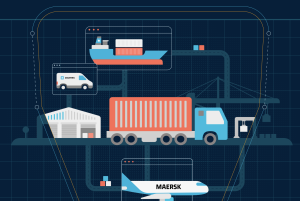 Why do we need to develop collaborative relationships with our key suppliers? Because we want to (a) reduce costs, (b) make process improvements, and (c) encourage innovation in products/services.
Why do we need to develop collaborative relationships with our key suppliers? Because we want to (a) reduce costs, (b) make process improvements, and (c) encourage innovation in products/services.
“The first two both sound quite straightforward, but to achieve innovation takes a bit more effort. We need to be open and transparent with those suppliers and focus on building trust”, says Elaine Porteous in this month’s SmartProcurement.
It is generally accepted that building strategic relationships with key suppliers is worthwhile; it delivers competitive advantage and a positive return on investment (ROI). In a recent PwC survey, nearly 90% of respondents said that they believed that the top management at their key suppliers was willing and able to collaborate.
Why then are we not seeing enough encouraging results?
From the survey, it was learnt that a lack of executive sponsorship was one of the most important hurdles to overcome. If there is no mandate from above to develop collaboration programmes or there are too few resources available to implement, it will be an uphill battle. Maybe some internal lobbying is required.
Suppliers benefit too
Their business relationship with us becomes more stable, they can become more cost-competitive and they will improve their core capabilities. Helping suppliers to understand the benefits of interacting positively with us is our job; we need to explain that, even though it requires effort, time and resources from their side, it is in their best interest to collaborate. The most successful supplier relationships are based on openness and a high level of information sharing.
Collaborating for innovation
Developing innovative solutions to problems means that we have to work alongside suppliers and support their efforts to improve the quality of products/services. A regular complaint from suppliers is that their proposals for design improvements or speeding up processes are ignored or fail to receive the attention they deserve. Opening multiple channels of communication for information sharing is a good start.
Collaborating for greater mutual value
Collaboration can lead to a reduction in costs for both parties beyond the day-to-day traditional haggling about price increases. If we treat key suppliers as partners, we can negotiate on facts, not assumptions, improve product specifications and streamline administrative processes. Working together with suppliers to achieve improvements, both in products and services, will not only reduce costs today but will provide sustainable benefits in the future. For example, better safety measures will reduce lost work-days and employee down-time and may even prevent reputational damage for both supplier and customer.
Keys to success in supplier collaboration
1. Share information
Open and transparent communication means sharing data and information. Suppliers must first share basic information on their companies, locations, contact details and everything about the products/services they provide.
Many companies encounter difficulties in sharing information and data, owing to the use of different software applications and enterprise resource planning (ERP) systems as well as concerns about confidentiality.
Both basic and transactional data can be made available using a dedicated shared portal or cloud-based supplier platform where the data on which decisions are based is trustworthy, secure and identical. To make information sharing simple for everyone, the solution should be user friendly with easy-to-read dashboards, visible alerts and a facility to raise issues and respond to them.
2. Define areas of responsibility
It sounds obvious, but it is important to clearly define what the desired outcome is for both parties as well as the resources required to achieve the outcomes. Each party has to commit to making personnel available and maybe even some initial expenditure. Often soft-skills training is needed on how to build the relationship. If there is to be any type of gain sharing, this has to be agreed upon and a method devised on how to share the benefits. If the supplier does not perceive that there is enough value in it for them, any collaboration proposal is doomed.
3. Tackle challenges
Some organisations have a problem with working openly, thinking that sharing operational and financial information leaves them in a weaker negotiating position. Building trust is perhaps the most critical success factor. Old-style adversarial relationships with strategic suppliers need special attention. They drain resources and waste management time. Finding common ground on which to build a relationship is thus the first step. Effective collaboration based on shared information reduces costs, improves service delivery and stimulates mutual growth.
TIP: an accepted best practice is to develop collaborative relationships at multiple levels, both corporate and operational, ensuring overall visibility into a supplier’s wider organisation.

























